Fallow Deer: Britain's most beautiful deer
Shy and elegant — yet far more hardy than its fragile appearance implies — the spotty-coated fallow deer is now more common than ever, despite only establishing itself on these shores when the Normans arrived, says Simon Lester.
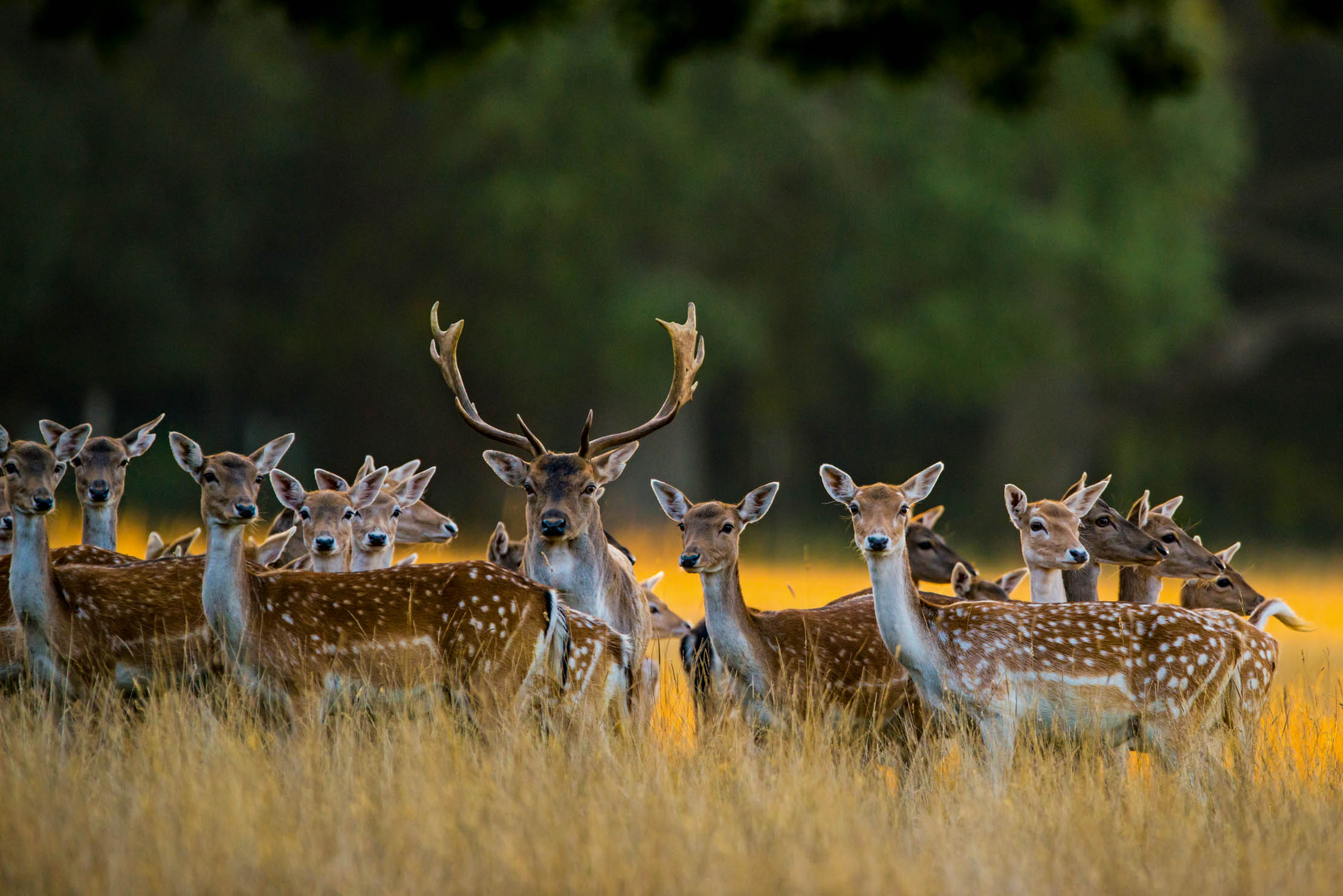
The elegant, spotted and spindly-legged fallow is arguably the most attractive of all the deer species of Britain. Smaller than the red and larger than the roe, they have graced many of our great country-house deer parks for centuries. Historically, Dama dama were present in Britain some 400,000 years ago, before this population petered out and the deer were restricted by glaciation to the Mediterranean basin. From there, they gradually reintroduced themselves throughout Europe. Although some say the Romans were the first to bring fallow deer to Britain, evidence is sketchy. Even so, that introduction would have become extinct and it wasn’t until the Normans landed on these shores that they became properly established.
Having managed them in deer parks myself, it is easy to see how this elegant cervid was the choice of the Normans for fresh meat on the hoof. Part of the ungulate family, they are happy to live together in large herds and — importantly — not always trying to escape. Hardy and relatively disease free, they thrive on the fruits of the forest. I have watched groups of deer standing under majestic oaks waiting for the acorns to shed, listening, eyes following as the fruit kerplunks through the branches, then rushing in to hoover up as the morsel hits the floor.
They happily graze most grasses and greenery; trees will have a browse line and, if things get tight, these delicate deer will eat fallen leaves. All of this natural bounty is converted into conveniently manageable carcasses providing joints of tasty venison. The female, known as a doe, weighs between 77lb and 123lb. The male fallow, a buck, sports antlers and weighs up to 205lb. Incidentally, it is surprising how often you hear a fine fallow buck incorrectly described as ‘a stag with magnificent horns’.
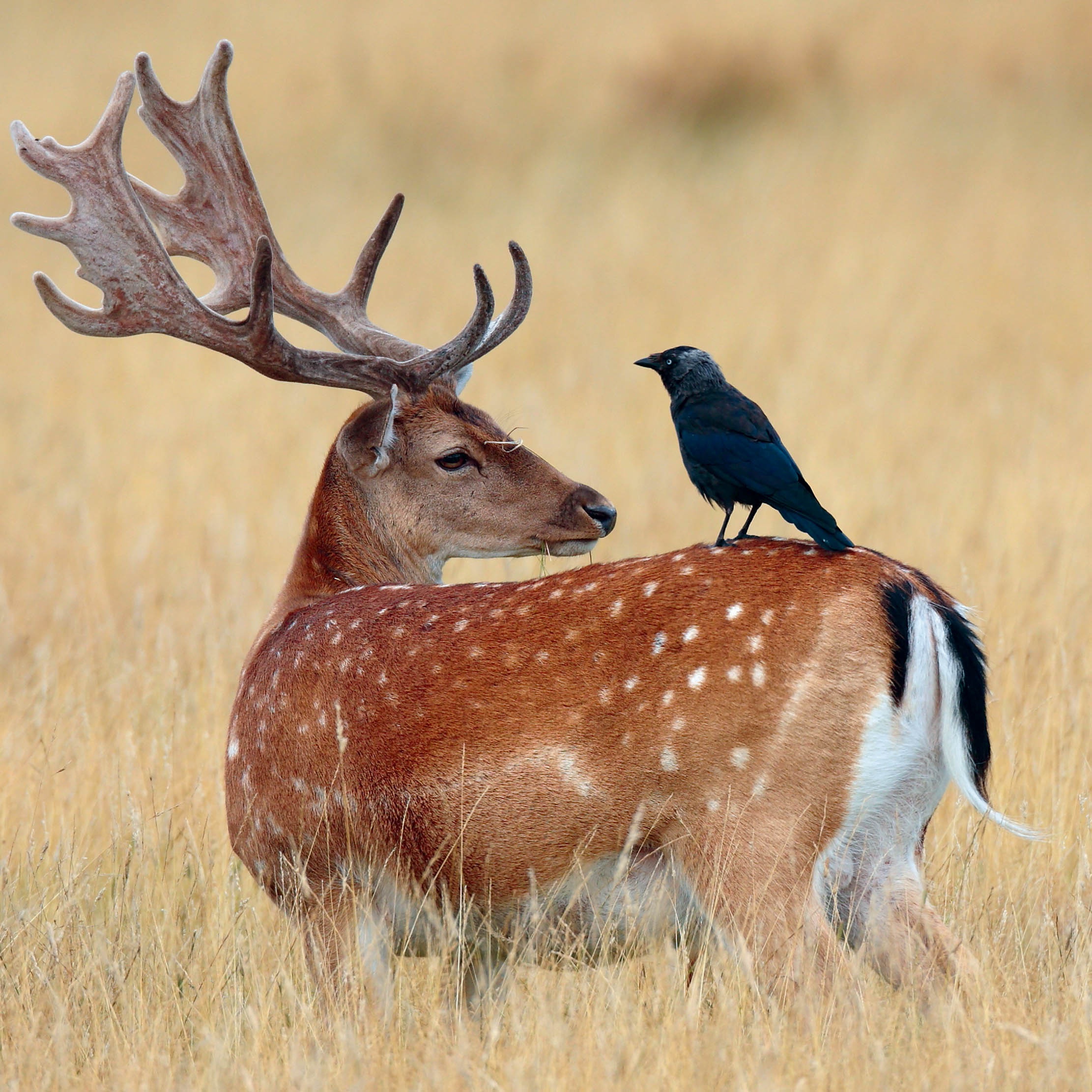
Fallow deer have four very different pelages: the common, the menil, the melanistic (black) and white. The common has light spotting on its back on a chestnut-brown background in the summer, which fades into a brownish-grey in the winter months. The menil has a lighter appearance, the white spots remaining all year, whereas the striking melanistic deer look more menacing in their all-black attire. The white deer are born as ginger fawns and turn white within a couple of years — they are not albino as is often thought.
Dama dama has a long tail to swish flies away in summer: those of the menil and the common, in particular, have black tops (with white underneath) that dissect white rumps. The position of the tail and this white rump patch are indicators of danger to the herd. If a matriarchal doe gives a sharp bark, the tails go up and will start the alarm gait known as pronking, a characteristic of fallow behaviour in which the animal appears to be bouncing along stiff-legged on all four feet.
However, the trait that makes fallow deer stand out most is the buck’s hand-like (palmated) antlers. Antlers are made from bone; they are cast and grow back each year, as opposed to horn, which is made from keratin and permanent. The first head is only a spike, the beast known as a pricket or yearling buck, which progresses to the intriguingly named sorrel, soar, bare buck, buck and a full-headed buck by the age of seven. A doe in her second year is known as a pricket’s sister or tegg and a pregnant doe as a braggard.
Fallow have their young in June and July: a single fawn is dropped, hidden in cover until strong enough to follow its mother and join the rest of the herd. For most of the year, males and females and young live in separate herds: active throughout the day and night, they mainly move about at dawn and dusk. Fond of congregating in large and small groups, they like to sit, rest and chew the cud (ruminate) in dense cover or, if free from disturbance, a woodland glade or on a sunny hillside.
Exquisite houses, the beauty of Nature, and how to get the most from your life, straight to your inbox.
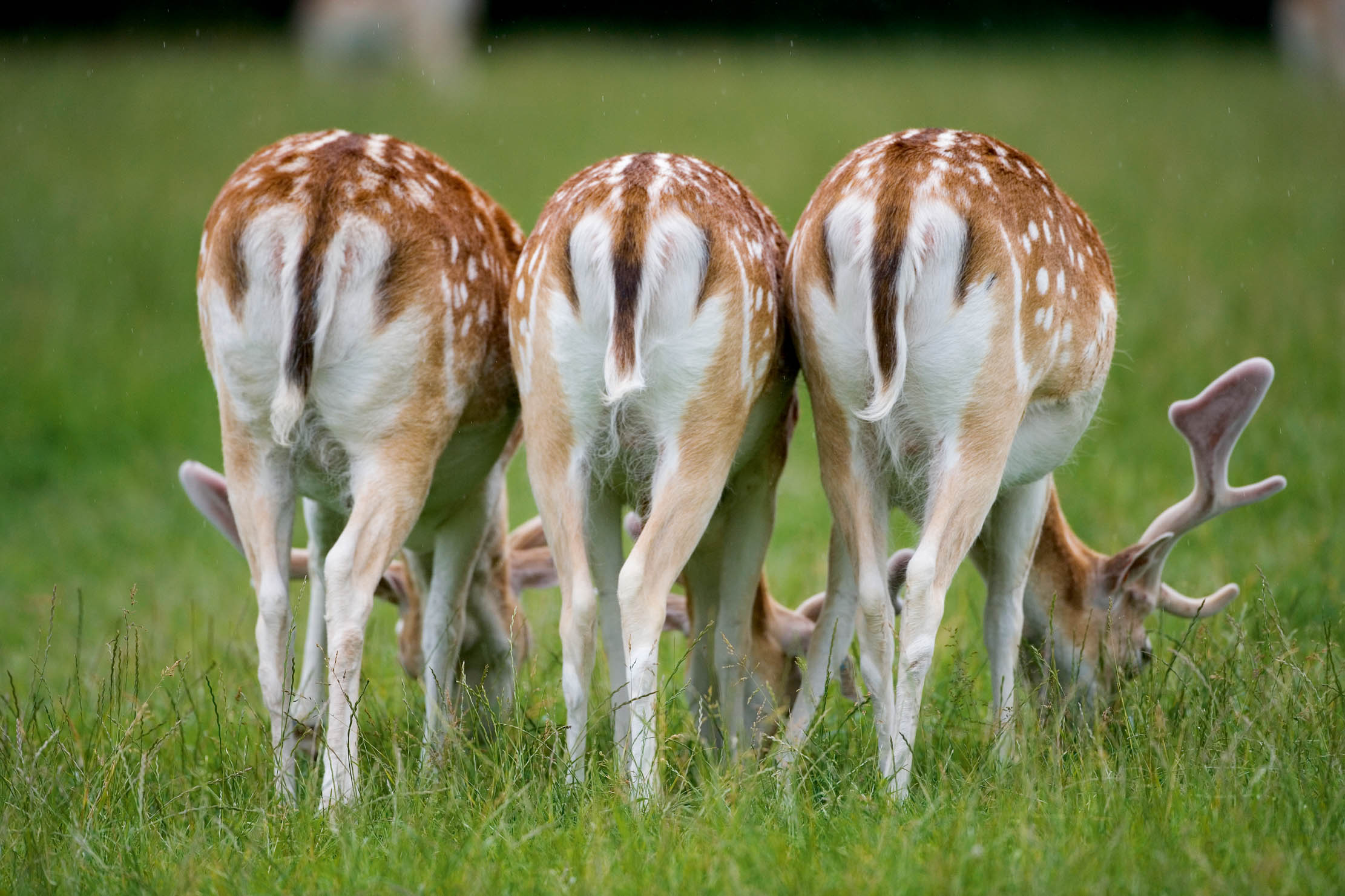
Males cast their antlers between April and May, and, feeling vulnerable as their new headgear grows back, there is no argy-bargy between bucks — they know they must feed up and grow back their new, larger antlers ready for the highlight of their year: the rut. This can start in September, but reaches its crescendo in October. In the build-up, a buck’s neck thickens, his Adam’s apple grows more pronounced and his antlers turn hard, stripped of velvet, ready for combat. His scent glands go into overdrive, with urine and muddy wallows completing the heady fragrance. Trees are scent-marked and thrashed, the woods filled with an aggressive air as testosterone-fuelled animals test their new heads.
The master buck will establish rutting stands from which he will belch and groan — a sound that echoes and carries for miles, calling all the girls to his smelly love nest. It’s not only does that are attracted, but also rival bucks and chancers, so the clattering of bone on bone can liven up the forest nights.These bouts can inflict serious injury and this, coupled with the fact that, during this time of intense activity, the bucks barely feed, means that the lead into the winter months can end badly for an older buck. Does, on the other hand, get longer faces as they get older — 10 years is a good age for a wild fallow; having no natural predators, their teeth wearing out is their only limiting factor.
Our most numerous deer species, the fallow enjoys the greatest distribution across the British Isles. Over the years, many escaped from deer parks, especially after the Second World War when so many country houses fell into disrepair. Deer in general have reached record numbers across the country, which has created conflict with forestry, agriculture and conservation, plus other issues, such as road-traffic accidents and the spread of tick-borne lyme disease. The only way to control their population is by shooting with an appropriate calibre rifle (stalking). In the past, packs of mounted buck hounds hunted fallow deer, but the last, in the New Forest, disbanded in 1997.
Although there are many professional and recreational stalkers, fallow deer are notoriously hard to stalk: they are always alert and can vanish into thin air without a shot being fired. Fallow are not territorial and large groups can be seen on your patch one day and miles away the next, making it very difficult to organise successful culling. It is a shame that, despite many groups promoting the fact that venison is a tasty, versatile, healthy and sustainable product, we simply don’t consume enough of it in this country.
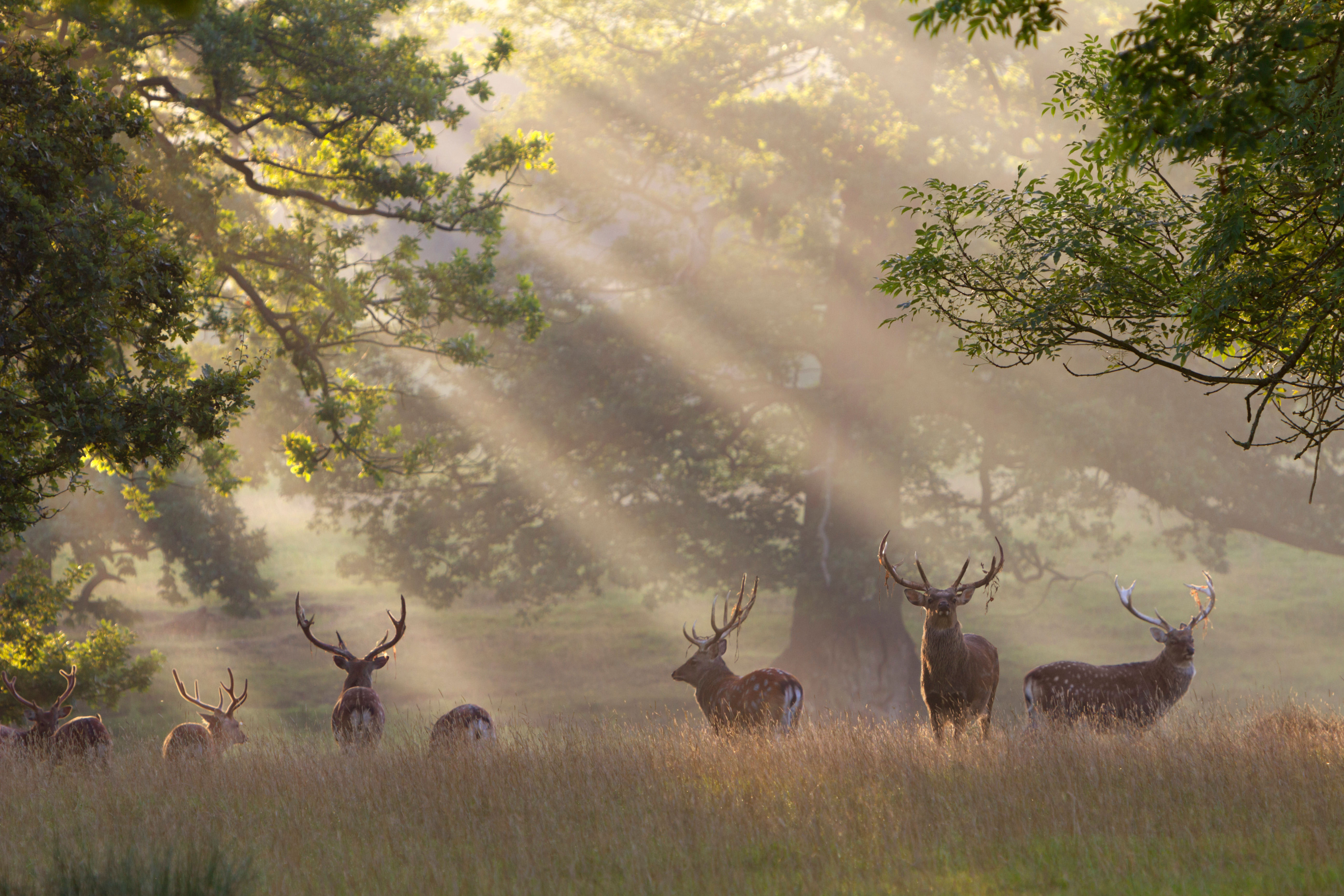
The six types of deer in Britain
Joe Gibbs takes a look at the six types of deer in Britain, and how they came to the nation
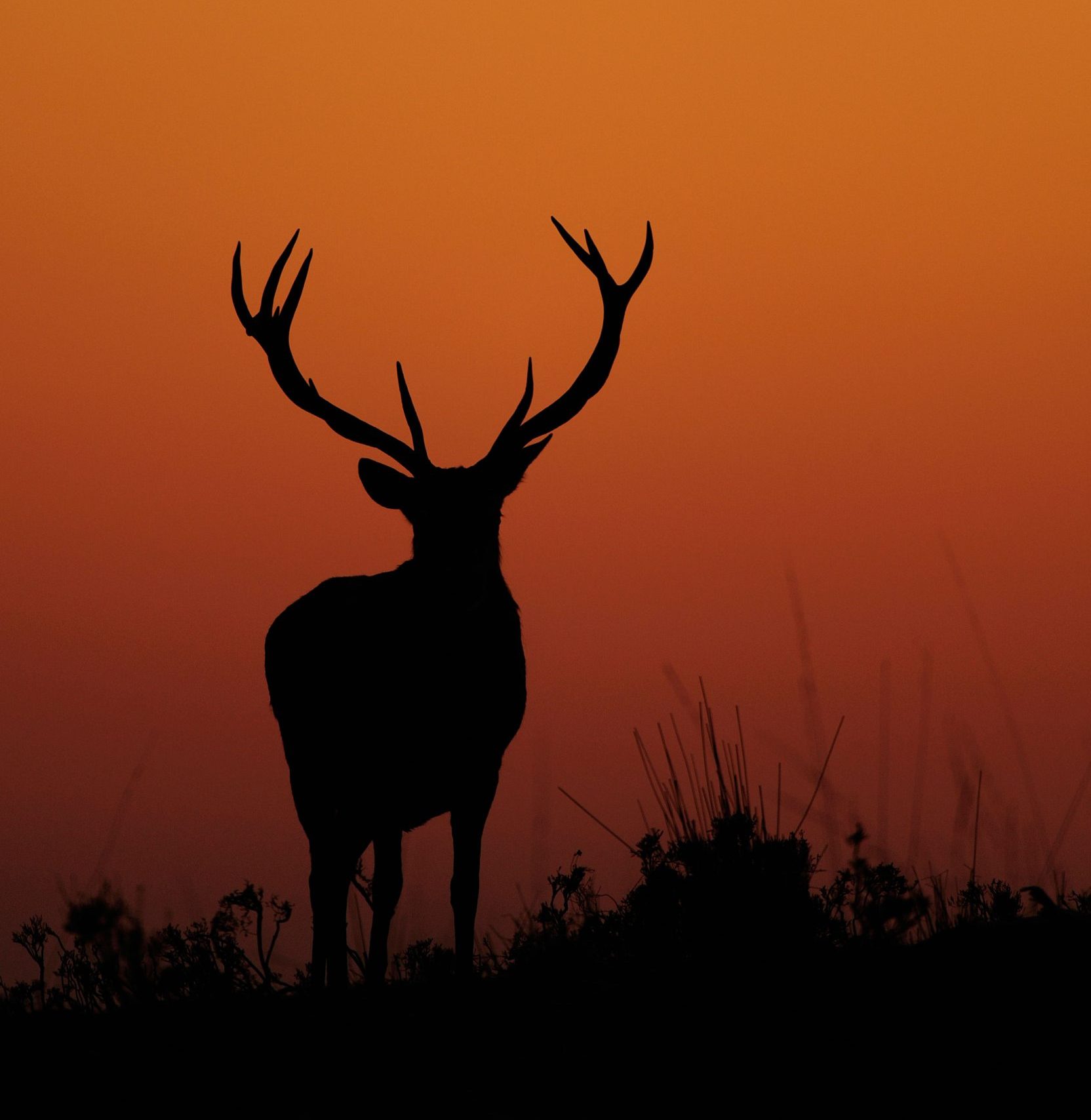
The truth about Britain's deer population, and what we can do to best manage it
With most of our six deer species increasing in range and numbers, Joe Gibbs considers what can be done to